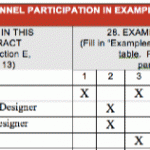
Last week, we explored why people make illogical decisions. And I explained the concept of the elephant and rider.
Almost immediately, I got this question:
“Matt, where are you going with this? What do I do with this information?”
Ha. That’s a great question. I certainly want to give people actionable advice.
What Action Should You Take Based On The Elephant And Rider Concept?
The fact is, you can use this concept to change so many things about your marketing and life. Today, I want to take it down to the ground level. So, if you haven’t read last week’s post yet…you’ll want to read that first.
Let me give you a few small examples of how you can apply the elephant and rider concept to your life.
Removing The Mouse
Sometimes the smallest barrier prevents our elephant from deciding to move forward. For example, he might see a mouse in front of the path (which scares him from moving forward).
You might think that’s silly. How can something so small, so insignificant, prevent this huge elephant from moving forward?
But you are falling back into the trap of “decisions are based on logic.” You’ll have to catch yourself each time you fall into this thinking. If you don’t, your behavior and the behavior of others will continue not to make sense to you.
Not only that, you’ll also remain virtually powerless to influence that behavior.
Let’s get back to the mouse. Sometimes ridiculously small barriers stop us from doing the things that, logically, we should be doing.
One good example is following up with people after you meet them. Why do people come back from a networking event and throw a pile of business cards in their drawer? They know they should follow up, but they don’t.
Let’s think about the barriers that could hold people back from sending that follow-up email:
- What do I write to them?
- How do I follow up without sounding like a used-car salesman?
- How do I convince them to meet with me (or my firm) again?
- What if I ask for something and they don’t respond?
- What if they do respond?
There is a lot going on here. But it’s why I personally use and advocate the use of email scripts.
I’ve already provided the exact scripts I use to get meetings with busy people. But I have about 20 email scripts I use for different situations. I have one for following up with someone I met at an event. I have one for following up after a meeting. I have one for practically every situation.
By using these scripts, I don’t have to worry about what I’ll write. I don’t have to worry about how to ask for a meeting or what to do if they don’t respond. I just follow the script.
Email scripts remove those barriers. Removing the mouse helps my elephant move in the direction I want.
Actionable Advice
Think about the barriers that prevent you or the people around you from doing what they should be doing. How can you remove those barriers?
Show Me The Yacht Clubs
Now let’s discuss moving someone else’s elephant.
One of my friends asked me to talk to his mom.
She helped this yacht club transform their floundering gift shop into a successful profit center. And she was looking to turn that into a consulting business. Her initial thought was to put together a PowerPoint and pitch yacht clubs around the country.
Even though she had done this for many different types of retail businesses…
…my advice to her was to ease back and concentrate on getting just one more yacht club (ones that were already calling her) to hire her as a consultant.
Here’s how I explained it to her. My firm analyzes delays on construction projects. The approach we would take to analyze delays on a railroad line is the same we’d use for a shopping mall.
But if I went to AMTRAK and said, “Look how we analyzed delays on this shopping mall. We could do the same for your rail line….”
…They would laugh me out of their office. Even if I explain the process is the same, they wouldn’t care.
They want to see “social proof.” They want to hear that we’ve analyzed delays for other rail agencies before. That’s because, when undecided, we look to the decisions of others.
It’s completely logical to believe my friend’s mom could improve the results of any retail business. But business owners don’t decide to take a chance based on logic.
My advice was having two yacht clubs under her belt would give her enough social proof to “take the show on the road.”
Actionable Advice
You have to learn what moves the elephant and apply those things to everything you do. If you hope to win through logic, you’ll be far less successful.
The actionable advice here is if you want to help people decide, show them social proof. Show them others, just like them, are making the decisions you want to see.
Aligning With Existing Habits
Now let’s get personal. Be honest with me. Do you floss your teeth every day?
Let me go all TMI here. I had horrible teeth. I never took care of my teeth. I’m not sure I flossed one single time in the first 30 years of my life.
This is important because, logically, we know how important it is to floss. It’s not like I didn’t know. It’s not like my dentist kept that information from me.
There was no global conspiracy to keep me from flossing. There was even dental floss in my house. It was easily accessible.
If I was a machine that made logical decisions, I would have flossed. Flossing is the logical decision.
As a result of my illogical decision, I’ve had so much dental work that we joke my dentist’s boat is named after me.
But when I went there a few months ago, the dentist was like, “Wow, your teeth look great. They are so white.”
I started flossing. First, I had some success by dedicating myself to flossing one tooth a day (another example of removing barriers).
But the real success was building it into an existing routine. Each night, I make my son brush his teeth. Now we floss together every night.
As a side benefit, my son’s toothbrush flashes for two minutes (it’s a little lightsaber).
As a result, I floss every night and I brush for much longer than I have in the past (who knew two minutes seemed so long). Now my teeth are doing great. They are better than they’ve ever been.
Actionable Advice
This is an important example because it’s easy for us to blame ourselves for making illogical decisions. It’s easy to get down on yourself (or someone else) for not behaving like a “normal person should behave.”
People who don’t floss know they should floss. Overweight people know they should exercise more. People who smoke cigarettes know its bad for them.
You can educate these people on the benefits of changing their behavior. You can tell them every day the dangers of what they are doing. But you’ll just end up wondering why this “crazy person” is making illogical choices and your efforts have not changed them one bit.
You think the rider is in control. No, the elephant is.
You can’t help these people, or yourself unless you learn to accept this reality.
I could not simply will myself to floss every night. It is very difficult to create new habits out of thin air. And it’s near impossible to stop existing habits (even if they are bad). It’s much easier, and often more effective, to build on a pre-existing habit.
What do you want to change? What existing habits can you build on to help create that change?
The Bottom Line
As you can see there is so much to take away from the elephant and rider concept. Learning about psychology will not just help your marketing…it will help your life.





Speak Your Mind